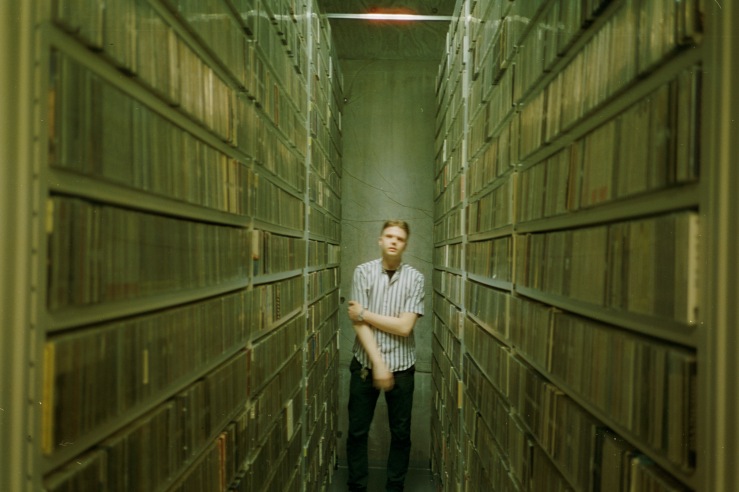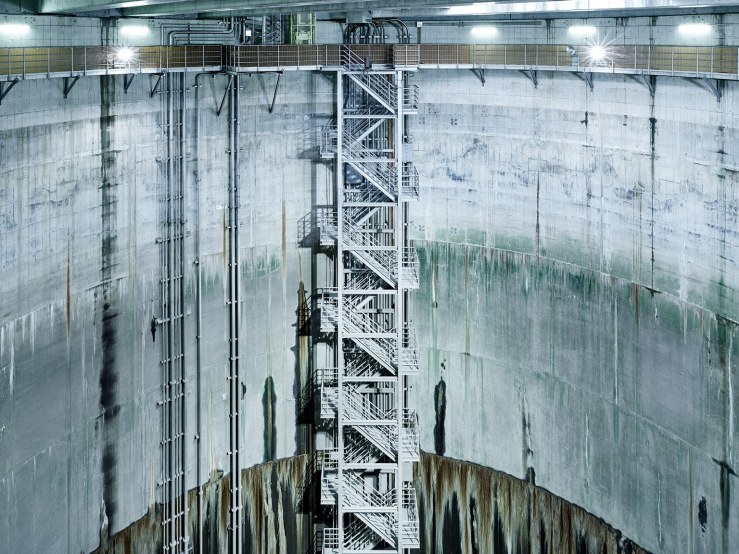Dear 2120,
I imagine that you’re busy. Busy doing things unfathomable to us, but pedestrian, maybe even tedious to you. Be it communicating techno-telepathically with the entire world all at once; purging yourself, odourlessly, of feces in some wonder machine of the future instead of taking a smelly, old-timey crap; or maybe just cleaning up the steaming pile of crap we left you with. My sincere apologies if it’s the third, turd-shovelling option. In that case, we failed to get it together for some deranged reason. ‘Together’ being the operative word.
Even so, in the hope that you might be interested in hearing about what went before what is now, I’ve written a message for perusal at your convenience. I’m hoping that it might offer some insight. Maybe even some kind of explanation for whatever you currently find yourself in.
It starts in my formative years, the 1990s. That’s when I got into skateboarding, music, beer, marijuana and girls. Back then, we listened to angry, militant hip hop, abrasive metal, grunge, techno and indie-rock. Sometimes the genres would merge and cross paths, creating bastardized off-shoots like rap-metal.

Public Enemy and Anthrax fistbumping in the early 1990s.
Running through it all was the narrative of what you might call transgressive subversion. Public Enemy and NWA, the voices of black, disenfranchised youth, stuck it to systemic oppression, Rage Against the Machine raged against the machine, metal stuck it to prevailing notions of bourgeois decency, Autechre, Orbital and The Prodigy stuck it to the Criminal Justice Bill and Kurt Cobain stuck it to just about everyone – including, in the end, himself. Telling ‘the man’ to fuck off was what it was about back then. In hindsight, some of it was probably a tad self-righteous and naïve. The youth cultural movements of the 90s purported to speak for the downtrodden, but largely neglected the unfairly stacked challenges faced by developing countries. To a certain degree, it was untamed neoliberalism with a humanitarian sheen – as thoroughly documented by Naomi Klein in her 1999 book ‘No Logo.’

In my twenties, the 00s, awkwardly named the ‘noughties’, it was probably more about transgression than subversion. As the birth of Transgressive Records in 2004 would seem to support.
In the wake of 90s political correctness and identity politics fatigue, the 80s made a big, brazen comeback and with it cascades of electro, punk, synth-freakery and cocaine reentered culture’s cutting-edge. Revivals come around every 20 years where I’m from (I suspect that you might have an astute observation to make about that based on your historical overview) and the 80s in the noughties was, overwhelmingly, about partying hard and ‘not giving a fuck’ in skillfully disheveled, punk-tinged ensembles. About transgressing boundaries and doing things deemed off-limits by your hippie-baby-boomer mother/father. Looking and acting like a douchebag uncle with a filthy little mustache and an ilicit drug habit, was suddenly your ticket to getting laid. This all made sense at the time, believe it or not.

Death from Above 1979 being their very 00s selves.
On the whole, I think that the unifying theme in the transgressions of the noughties was the quest for freedom. Freedom from constraints, freedom from shame and guilt, freedom from categorization and labels, the freedom to be an arrogant diva and/or a self-centered asshole, the freedom to dress like a confusing mess with a jumbled-up aesthetic somehow existing outside the tyranny of being nailed down to a specific era. That, and not taking things too seriously. There was definitely a playful element to things back then.
In and of itself, there’s nothing wrong with wanting freedom. The trouble with an urgent belief in freedom from everything, including responsibility, is that it impinges on other people’s freedom in unseen an unforeseen ways. It’s just plain antisocial. Admittedly, this went way over my head when I was 25 in 2005.

Photo of a careless me getting ‘hyphy’ circa 2005.
At some point in the late 2000s, what started out as refreshing irreverence in the face of stale, self-righteous sanctimony began to fester and transform into its own kind of stifling bullshit. A wanna-be reckless, heavily orchestrated lifestyle, (which shall remain nameless here mainly because I’m sick of uttering said lifestyle’s deeply problematic label) that so desperately tried to be free and new, but was ultimately snared in by all the unseen reins of the past. In any case, countless blogs and articles dedicated to calling out and mocking the allegedly oblivious, ego-centered cultural elite started popping up left, right and center.

Broadly speaking, in somewhat simplified terms, I think it was the combination of the global recession of 2008 and the growing, physical realization that we were doing irreversible harm to a planet with finite resources, creeping in gradually through the cultural cracks, which ultimately permeated everything and made mustachioed creatives and fashion-forward designers seem irresponsible and oblivious. Knowing that you’re fucking the planet on an abstract, theoretical level is very different to knowing it physically. When it really gets under your skin, when it seeps into every pore and the all-too-real real possibility of your partaking in the escalating apocalypse intermingles with your molecular structure, it completely knocks the wind out of your sails. To the point of needing an escape route; an exit from the great depression caused by the seemingly impending End of the World. For some people the escape became the identification of a scapegoat. Sure enough, around 2008, creatives became that scapegoat. People needed a vent and the vent was aimed squarely at all the designers, graphic designers, musicians, artists and gallery owners who purportedly failed to care about the important issues of the day (paradoxically, though, a lot of so-called conscientious observers were targeting themselves with their bashing. But that’s another story).
So, to sum it up, we went from the narrative of transgression to the narrative of restriction. Limiting yourself in all aspects of life, living frugally, reflectively and conscientiously while sporting ecologically-grown facial hair was the logical conclusion to the recklessness of the 2000s. It was the responsible, detoxing hangover cure following a decade of being mindlessly drunk on extroverted fun and games. PC and ID politics dusted themselves off and tried again, to paraphrase the great poet Aaliyah, clearing the stage for new and fresh takes on 90s anti-patriarchy, like intersectional feminism, the Black Lives Matter Movement, LGBT rights and innumerable, other worthy, ‘woke’ ways to limit and restrict the damage done by the careless, self-absorbed noughties.
Finitude and finality of resources, the idea that our planet is anything but a boundless reservoir of fossilized energy, finally etched itself indelibly into our collective psyche, creating vertigo-inducing, introverting cerebral wounds that we’re likely still recovering from. Hence all the apathy and failure to act. Adding to that, I think a certain transgressivist individualism, as mapped out by Adam Curtis in several documentaries, is proving incredibly hard to shake. It seems to underpin everything from the person-obsessed art world to the upper echelons of global capital. Negotiating the paradigmatic shift from the cult of individualism to a new kind of collectivism that gets everyone onboard regardless of political orientation is undoubtedly the great challenge of our generation. As the late, great cultural theorist and author of the highly recommendable book Capitalist Realism, Mark Fisher AKA K-punk puts it in an interview on the book:
'The thing is it's nobody's fault, you can say, in a genuine sense, but that is the problem - because there is no agent capable of acting. There's no agent at the moment that's capable of taking responsibility for a problem on the scale of the environmental catastrophe that we're facing. Instead, it's contracted out to us as individuals as if we could do anything about it by simply putting plastic in the right bin. That won't solve the environmental catastrophe that we're up against. The only thing that can solve it is the production of an agent capable of acting. But of course nothing like that has ever existed throughout human history until now - which doesn't mean it can't exist, but that we're in very new territory.'
As an incorrigible optimist, I have to believe that we’ll somehow produce this first-time occurrence in the history of the world: a collective agent capable of acting on behalf of the atomized human race. Dropping the ball on the future of the planet isn’t really an option. If this message is to have a recipient, we clearly need to jettison our cynicism, stop our pathological fixation on fictional doomsday scenarios, curb alarmist clickbait headlines, and relinquish a billion bad habits that have colonized our biological harddrives into submission. Moreover, it’s essential that we make doing the right appealing to everyone. Not just people with fancy educations and unlimited surplus energy.
Thankfully, progressive initiatives following that line of thought are in the works. Danish architect Bjarke Ingels has recognized that restriction and limitation aren’t among the most inspiring or sexy virtues in the world. He calls his architecture ‘hedonistic sustainability’ presumably as a way to dispel the notion that sustainable living has to be about tasteless vegetables and acquiring nervous tics about carbon footprints. On the face of it, at least, it seems a progressive philosophy, attempting to reconcile the forces of modernity with the critical necessity of reconfiguring the cannibalizing consumption of late capitalism.

The Hualien Residencies in Taiwan designed by BIG/Bjarke Ingels Group.
Other than attempting to make us an interplanetary species and possibly overdoing the acid, Elon Musk is making sustainability look dynamic and appealing by creating swish, affordable electric cars and nice, solar roof shingles that don’t cost an arm and a leg. It looks like sustainability can actually be good for your bottom line, not to mention your cultural capital, all of which you have to understand is incredibly important here in late capitalism. In the long run, people here in 2017 usually prefer the dynamic and the active to the static and restrictive.
Still, we have long-ass way to go, to use a a contemporary colloquialism. These initiatives are at best small, anomalous ripples in a sea of excrement. Trump was recently elected president and he instilled a cabinet, which largely denies the proven reality of anthropogenic climate change. In turn, reality in the early 21st century is getting increasingly surreal and scary.
If you’re living in a worst case scenario, this message might seem the like the deranged, deeply offensive, frighteningly clueless cries of a 7-year-old, convinced that the world will bend to his petulant whims. On the contrary, if you’re living in a best case scenario, if we made it, and you’re living the fifth generation or so of the internet, you’ll probably just be hopped up on some benign version of Soma, thinking that I’m old, stuffy and irrelevant.
All things considered, I guess I can live with that. Just know that in a hundred years from 2120, someone will probably think the same about you, old sport.







 Erosion Flow artwork by Andreas Vasegaard
Erosion Flow artwork by Andreas Vasegaard






